- Administrator
- Albums and Singles
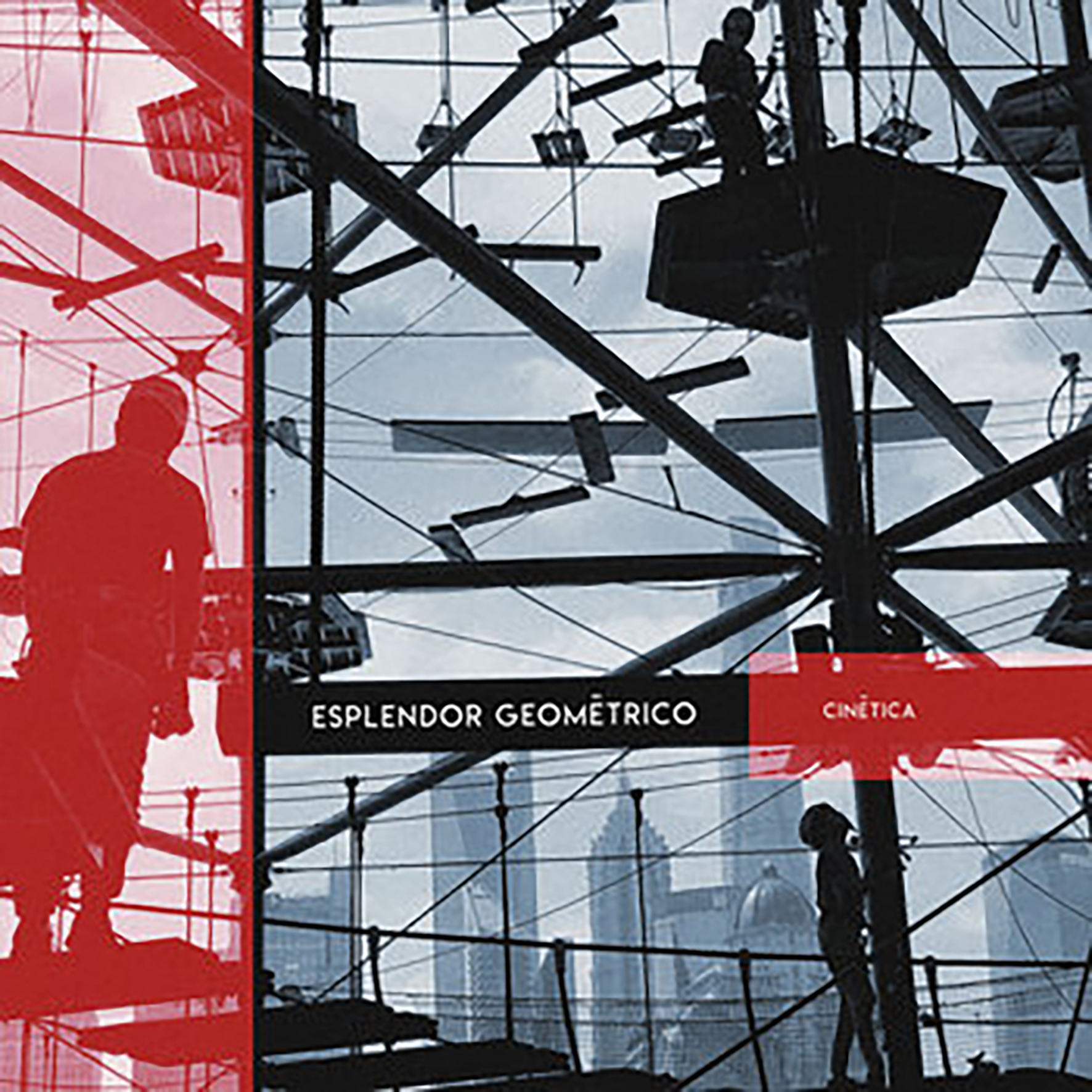 I am not sure which is more remarkable: the fact that these iconic industrialists are currently celebrating their 40th anniversary or the fact that they somehow seem to be getting even better in recent years. Aside from Legendary Pink Dots or Swans, I am hard-pressed to think of any other band that has had such an impressive renaissance after their supposed heyday and this particular case is all the more remarkable since Arturo Lanz has remained so single-mindedly focused on pursuing the same narrow stylistic niche all along. Given that consistency, it is no surprise that Cinética is yet another feast of pummeling industrial-strength percussion loops featuring a yet another handful of alternately propulsive and crushing highlights. However, I was surprised at how this latest batch of rhythmic assaults occasionally transcends the duo's "industrial dance" aesthetic to approach a sort of trance-inducing strain of heavy psych.
I am not sure which is more remarkable: the fact that these iconic industrialists are currently celebrating their 40th anniversary or the fact that they somehow seem to be getting even better in recent years. Aside from Legendary Pink Dots or Swans, I am hard-pressed to think of any other band that has had such an impressive renaissance after their supposed heyday and this particular case is all the more remarkable since Arturo Lanz has remained so single-mindedly focused on pursuing the same narrow stylistic niche all along. Given that consistency, it is no surprise that Cinética is yet another feast of pummeling industrial-strength percussion loops featuring a yet another handful of alternately propulsive and crushing highlights. However, I was surprised at how this latest batch of rhythmic assaults occasionally transcends the duo's "industrial dance" aesthetic to approach a sort of trance-inducing strain of heavy psych.
One of the more fascinating aspects of Esplendor Geométrico’s oeuvre-and the likeliest key to the project's longevity-is how Arturo Lanz has managed to make beat-driven music for so many years while nimbly avoiding just about every single possible trend in underground dance music.Instead, he has stayed relevant by remaining a perpetual outsider, often drawing his inspiration from cultures far outside the cutting-edge dance milieu.While the backbone of the project has long been Lanz's unwavering devotion to the relentless, machine-like repetition of rhythmic loops, he has proven himself to be remarkably resourceful in finding new ways to keep that rigid formula fresh and has never stopped evolving in his own subtle way.The most obvious example of his eclectic approach to innovation was the incorporation of Arabic rhythms on 1991's Sheikh Aljama because that was the theme for an entire album, but an alert listener would have no trouble at all finding nods to sundry other cultures strewn throughout EG's many releases.I would be curious to know how much of that is deliberate and how much is simply absorbed by cultural osmosis, as Lanz has stated that he does not actually listen much outside music beyond "the classics from his youth."He does seem like an especially well-traveled guy though, so it is not hard to believe that he simply moves through life picking up new ideas from the sounds around him like a tirelessly innovative post-industrial sponge.I am especially fond of the more Latin-sounding strains that have found their way into EG's grooves over the years, though there are lamentably no overt nods to Cuba, Colombia, or Brazil this time around.Then again, maybe there are, as both the shuffling and clattering "Friccion" and the manic, skittering "Acoplamiento internacional" seem to have traditional roots that elude me as a non-ethnomusicologist.
More frequently, however, the beats are either fairly straightforward, punishingly industrial, or ambitiously alien. All are equally likely to be great, as both the tempo and the accompanying hallucinatory maelstrom of distorted voices and machine noise tend to play key roles in whether or not a piece catches fire to become something more than just a cool rhythm.For example, the opening "Construcción transformadora" is essentially built from little more than a relentlessly bulldozing and bass-heavy rumble and some distorted guitar chords, but it works beautifully because it is augmented with eerie submerged voices and ping-ponging percussion flourishes.Similarly, "Regulación percusiva" is propelled by a fairly textbook (if overcaffeinated) breakbeat, yet its streaking trails of chirping electronics and swirl of chopped and manipulated voices makes it an unexpectedly absorbing tour de force.The aforementioned "Friccion" is one of the more leftfield delights, as it evokes either a clanking, lurching conga line of robots or a massive mechanical caterpillar.Despite that, it somehow manages to be one of the most improbably soulful and hooky songs on the album due its surreal mélange of soul diva vocals and pitch-shifted weirdness.Elsewhere, "Modulaciones" comes close to completely stealing the show with its uncharacteristically simmering downtempo groove, calling to mind a half-speed homage to "Funky Drummer" enhanced by drifting, ghostly samples of chanting voices.It is easily one of the most nuanced and sensuous pieces that I have heard from Lanz and Saverio Evangelista and I absolutely love it—I would happily listen to an album-length remix of "Modulaciones" alone.
The same is true of the closing "Inercial," which is arguably one of the most distilled and perfect examples of EG's singular vision to date.It is absolutely brilliant in its simplicity, as Lanz and Evangelista take a one second-long beat snippet and loop it into a mercilessly surging and unstoppable juggernaut of seismic abandon.On one hand, it sounds like an out-of-control Carnaval party and a full-scale political riot improbably turned down the same street and merged together, yet the endlessly repeating crunch and throb of the beat almost make me feel like I am sinking into an ecstatic trance-state.Between that and "Modulaciones," Cinética boasts at least two instant classics that make Lanz and Evangelista seem like rhythmic savants on a plane all their own, which is exactly what I have grown to expect from recent EG albums (though those two pieces were still great enough to surprise me anyway).The rest of the album is quite solid as well, however, as there are not any songs that I would describe as either a misfire or too far over-the-top.In fact, even the most album's most indulgent and experimental piece ("Resumen de cantos") manages to be outré enough to keep me interested, resembling a time-slowed and stammering rave of the damned.I suppose I could probably do without the avalanche of bonus material appended to the digital version of the album, as an "all killer, no filler" approach is always best, but I cannot fault Lanz and Evangelista for taking a victory lap after putting the finishing touches on such a murders' row of masterfully crafted and mind-expanding mechanized assaults.
Samples can be found here.
Read More
- Administrator
- Albums and Singles

Sound In Silence is happy to announce the return of Eternell, presenting his new album Imagined Distances.
This is his second release on the label after the highly acclaimed, and already sold out, album Still Light back in 2018.
Eternell is the ethereal and meditative music project of Ludvig Cimbrelius, based in Höör, Sweden. Since 2014 he has released several sublime albums on his own Eternell label and a compilation on Stereoscenic Records, while he is also known for his ambient/dub techno Purl project with releases on labels such as Silent Season, Dewtone Recordings, Archives, A Strangely Isolated Place, Databloem and many others. During the last decade Cimbrelius has also released his music under his own name and various monikers such as Alveol, Surr, Rust, Illuvia, Ziyal, Xpire and others.
Imagined Distances is made up of six long-form tracks with a total duration of something more than 75 minutes. Cimbrelius’ intelligent arrangement blends layers of airy synths, warm pads, drifting guitar melodies, subtle bass rhodes and indistinct dreamy vocals, resulting in one of his most accomplished works to date.
Carefully mastered by George Mastrokostas (aka Absent Without Leave), Imagined Distances is a wonderful album of blissful ambience, restful soundscapes and intricate textures, which appeals to all fans of artists such as bvdub, Jónsi & Alex, Warmth and Moshimoss.
More information can be found here.
Read More
- Administrator
- Albums and Singles
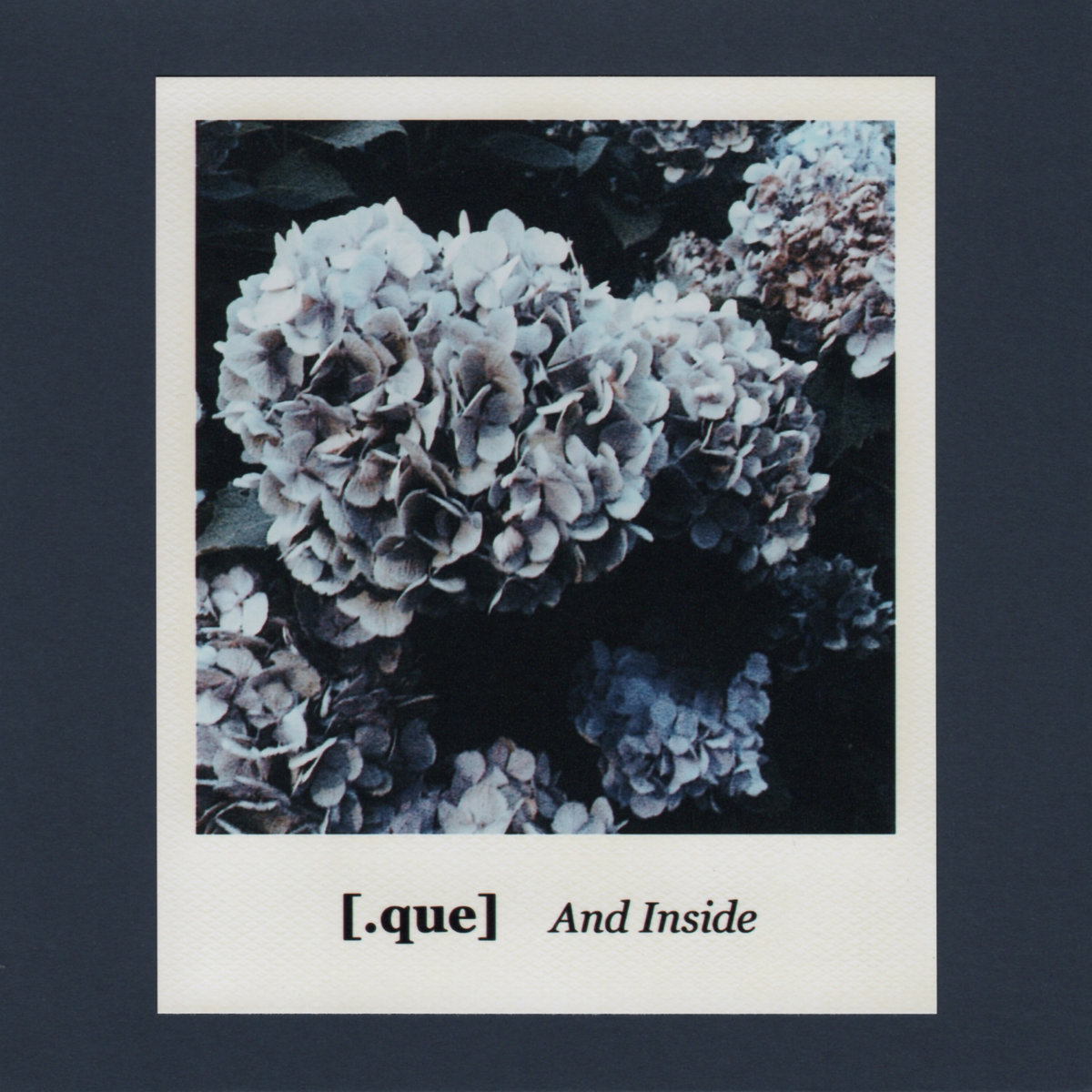
Sound In Silence is proud to welcome back [.que], presenting his new album And Inside.
This is his second release on the label after the highly acclaimed, and already sold out, album Wonderland back in 2017.
[.que] is the solo project of multi-instrumentalist Nao Kakimoto, based in Tokyo, Japan. Since 2010 he has released ten albums and many EPs and singles on labels such as Schole, IntroDuCing! and his own Embrace. He has also composed music for many film movies, television commercials, websites and exhibitions.
And Inside is his eleventh full length album and consists of ten tracks with a total duration of about 35 minutes. Started taking shape during the recording sessions for his previous album, And Inside expresses a deeper and more personal aspect, reflecting the inner world of [.que]. Harmonizing the warmth of acoustic instruments with delicate electronic textures, [.que] creates an emotional album full of nostalgic melodies, dark atmospheres and complex rhythms.
Mastered by Shigeharu Ieda of One Day Diary, And Inside perfectly blends gorgeous twinkly folktronica, joyful dream-pop and elegant post-rock and it’s a must-have album for fans of artists such as The Album Leaf, Message To Bears, Miaou and Epic45.
More information can be found here.
Read More
- Administrator
- Albums and Singles
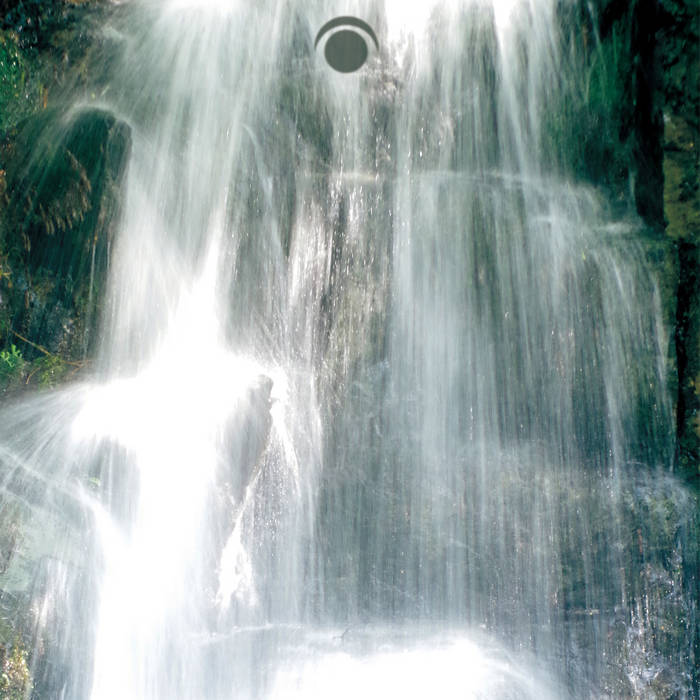 Martial artist, philosopher and actor Bruce Lee famously stated "Empty your mind, be formless. Shapeless, like water. If you put water into a cup, it becomes the cup. You put water into a bottle and it becomes the bottle. You put it in a teapot, it becomes the teapot. Now, water can flow or it can crash. Be water, my friend." Lee’s words were not merely pretty poetry, he lived them. Tengger are pan-Asian duo Itta and Marqido with their young son RAAI, and like Lee, Tengger craft their music in the same way they live their lives: with intention. They have built their principals—and fan following—after many years touring and living on the road, recording their music surrounded by unfamiliar cultures and environments. Self-described as EPT (Electronic Psychedelic Traveller) music, their name translates to "borderless sky beyond description" in Mongolian, and their music paints landscapes in the mind. Nomad is no exception to this rule, and their latest brings their philosophy, their music, and their moniker to a majestic head, offering an album of journey and movement that encourages flowing around the claustrophobia and confinement of 2020.
Martial artist, philosopher and actor Bruce Lee famously stated "Empty your mind, be formless. Shapeless, like water. If you put water into a cup, it becomes the cup. You put water into a bottle and it becomes the bottle. You put it in a teapot, it becomes the teapot. Now, water can flow or it can crash. Be water, my friend." Lee’s words were not merely pretty poetry, he lived them. Tengger are pan-Asian duo Itta and Marqido with their young son RAAI, and like Lee, Tengger craft their music in the same way they live their lives: with intention. They have built their principals—and fan following—after many years touring and living on the road, recording their music surrounded by unfamiliar cultures and environments. Self-described as EPT (Electronic Psychedelic Traveller) music, their name translates to "borderless sky beyond description" in Mongolian, and their music paints landscapes in the mind. Nomad is no exception to this rule, and their latest brings their philosophy, their music, and their moniker to a majestic head, offering an album of journey and movement that encourages flowing around the claustrophobia and confinement of 2020.
Tengger interweaves drone, ambient, psychedelia, the Krautrock influences of Kraftwerk, Cluster and Steve Reich, and new age music painted with environmental sounds. They craft their music with Itta’s harmonium, divine vocals, and toy instruments, along with analog synthesizer from Marqido. Based on this description, it is easy to confine them to Tangerine Dream ambient meanderings, but Tengger reject this notion, explaining their music as "landscape poetry". Known as Shansui in Japanese, this concept is worth exploring for this album.
Shanshui poetry refers to the movement in poetry influenced by the ancient Chinese "shan shui" (landscape) painting style of repeating mountains and water images. The art’s purpose serves not to create perfect replications as seen by the eye, but for opening windows to the viewer’s mind, breaking artistic conventions of "proper" color, light, shadow and brush strokes. Three basic components are in Shan shui paintings: Paths, the Threshold, and the Heart. Paths are never straight and always meander to help deeper the landscape through which it travels, mimicking the patterns created by nature. This path leads to a Threshold, a place that provides welcome, whether it is the mountain itself or the shadow cast by it. All natural lines should flow inward to the heart, serving as the focal point.
The gorgeous waterfall seen on the album cover is the first hint at this philosophy. Opener "Achime" (translating to "morning" in Korean) uses bird songs and other field sounds, with lyrics that translate to "the heart to greet this morning that will never be again." Tengger has explained the song is about travel: both the water’s travel, and our own inner travel, our nomadic wanderings in a search for life’s meaning. Song titles "Bliss," "Water," and "Flow" add further brushstrokes to the sound landscape. The individual sounds by themselves lend atmosphere, but when brought into relationship with each other, the songs offer rustic terra firma.
Bliss is all over this album, with a calm and compassionate vibe through the six songs that feels like a warm embrace. I have only one complaint; with the entire EP clocking in at just over half an hour, the time constraints don’t offer the songs room to expand, and sometimes seem like excerpts of broader experiments that, in other contexts, could work their magic over hours instead of minutes. The ten-minute closing track "Flow" showcases this: angelic vocals make their entry and move in and out, floating over an underlying layer of synths. Layers of sound build in waves, while the sound of flowing water appears, fades and reappears as the focal point with natural movement through the music.
This is music that offers exploration of sound, environment, and self. Lee also said "Life is an ever-flowing process and somewhere on the path some unpleasant things will pop up: it might leave a scar, but then life is flowing, and like running water, when it stops it grows stale. Go bravely on, my friend, because each experience teaches us a lesson." Just as Lee’s words serve as a hopeful reminder today, Nomad thankfully exists in the brutality of 2020, an oasis of calm in the storms.
Read More
- Administrator
- Albums and Singles

Luminary Pauline Oliveros passed away in 2016, her career spanned fifty years of boundary-dissolving music making. This previously unreleased concert recorded in 2009 has been unearthed for release on Spleencoffin in 2020. Here she plays her accordion and her expanded instrument system along with collaborator Alan Courtis on unstringed guitar and fx.
This concert is an eruption of controlled cacophony. The pieces are improvised, messy, powerfully loud, and in your face. Most sounds are as if made by a mad scientist, with "traditional" musical ideas few and far between. Dissonance wins the day, with many insistent chord clusters of mishmashed notes bleated insistently and at high volume. While I believe this sound emanates from accordion, it sounds like the scraping of metal on metal. The accompaniment shudders voluminously as the sounds of an amplified muffler fill the space of the room.
Telematic Concert leaves me feeling shocked by the sheer assault of it all, but also open to the deeper listening that Oliveros would’ve wanted; a careful hearing and re-hearing that allows me to acquaint myself with the strange contours of this alien and startling music, until listening again yields to familiarity and appreciation.
Read More
- Administrator
- Albums and Singles

"I am very happy to let you know that my next album, Cantus, Descant, has been announced today! Cantus, Descant is a double LP spanning 17 tracks and over 80 minutes of new works for pipe organ, reed organ, and electric organ. It will be released on September 18 via Late Music.
This is an album about welcoming and reconciling impermanence and endings, about suspending the private within the collective, about states and moments of being. I spent a little over two and a half years making it, working with a special group of organs in Los Angeles, Amsterdam, Chicago, Vancouver, Copenhagen, and in my home studio. For the first time, I am even offering two songs! This is a very personal record that has occupied a deep part of my world for some time and it means a lot to be able to finally share it. As always, thank you so much for listening, it means the world to me."
-Sarah Davachi, 7/2/20
More information can be found here.
Read More
- Administrator
- Albums and Singles

Released July 3, 2020
Created and Produced by Justin K Broadrick
at Avalanche, U.K 2009-2020
Published by Mute Song Ltd
AREC048. AVALANCHE RECORDINGS 2020.
More information can be found here.
Read More
- Administrator
- Albums and Singles
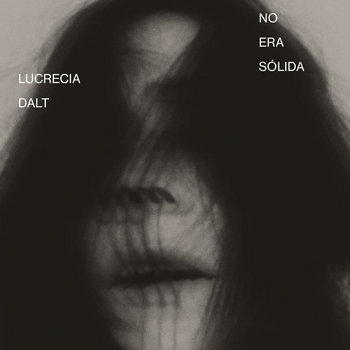
Lucrecia Dalt presents No era sólida, an introspective path to unworldly surroundings where self becomes sound, and a compass for the searchers of musical possession.
For her follow-up full-length to 2018's Anticlines, Dalt relinquishes control of the corporeal to reach imagination's outer realm. Where Anticlines framed the physical processes of matter changing state, No era sólida observes a transition in Dalt herself through the emergence of Lia: an apparition, or second self, of the artist as pure gesture and mimetic transgression.
In spectral suspension, Dalt becomes the medium between herself and Lia. No era sólida is a meeting place between these phenomenal and noumenal worlds: a diverse if not complicated landscape, but without a single solid form in sight. Swelling with cosmic oscillations and rhythmic tremors, the album’s sound materializes through new experiments with harmonic distortion in tape delay and Dalt's continued abstraction of percussion and pulse.
This atmosphere of auditory illusion is lush for vocal experimentation. In a mood stirred by griot singer Fanta Damba, Dalt produces wordless vocalizations guided by Lia's unconscious impulses. These ethereal murmurs channel a Surrealist’s automatism as Dalt dissolves language into an evocative collection of glossolalia. Her voice, possessed and processed, weaves through moments of No era sólida like a duplicitous organism playing hide and seek.
Each song identifies a different state experienced by Lia, opening with "Disuelta" ("dissolved") and transforming through pieces such as "Seca" ("dry"), "Ser boca" ("to be mouth"), and "Espesa" ("thick"). As the record progresses, Lia seems to emerge from primal, sensory states to the sentient and active conditions of "Revuelta" ("revolt") and "Endiendo" ("to understand"). These transitions signal a process of becoming, as Dalt conjures, and nurtures, a dormant being into life.
When No era sólida reaches its final title track, the spell of spoken tongue is broken and Lia can talk. Returning to the musings familiar to listeners of Anticlines, Dalt voices in her native Spanish a question posed to her by Lia: "Can paralysis transform a person into a thing?" The forbidden being fumbles lyrically through the nuances of her existence and newly-discovered senses, and wades through melodies of crystalline breathing and clicks of static like dust on a cylinder.
Lia's poetic reflections on the panspermia echo her origins, having come from some other ether. As a lifeform seeded through sound, the very essence of Lia is embodied in the exploratory instincts of her creator Lucrecia Dalt, an artist whose innate sonar system traces the far reaches of musical experimentation.
Lucrecia Dalt's No era sólida is available September 11, 2020 on vinyl and digital formats. As with Anticlines, a limited artist edition, designed by Will Work For Good, will accompany the vinyl release. Once again, a portion of proceeds from No era sólida will benefit Tierra Digna, an organization dedicated to the defense of Colombian communities affected by economic policies that violate human rights and devastate the environment.
More information can be found here.
Read More
- Administrator
- Albums and Singles
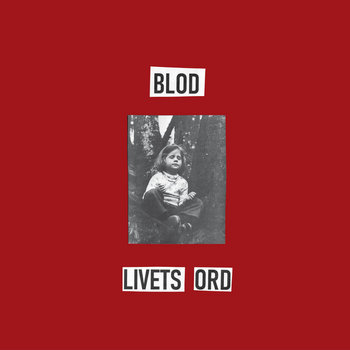
Low-key synth & keyboard studio album by Swedish all-rounder Gustaf Dicksson. Limited edition of 300 copies with insert.
From the early days of the found-sounds recordings (like the downright scary Unga Röster album and the hilarious Mandys Bil 7"), the homespun kitchen recordings/tape collages of the still-going Idiotmusik series to the more carefully elaborated and precise Leendet Från Helvetet and Knutna Nävar albums, the massive Livets Ord dropped like a bomb when it originally surfaced as a self-released cassette in 2018.
Heavily based on synths and keyboards and clocking in on no less than close 70 minutes over 4 LP-sides, this is arguably THE epic album from the cluster around the Förlag För Fri Musik empire. Gustaf Dickssons' fascination for christianity/religious assemblies shines through once again, the title Livets Ord ("The word of life") derived from the Swedish free church/sect with the same name that was based in Uppsala between 1983-2013 and casting a pastoral shadow over the ambient music of the album. While dabbling with a long tradition of kosmische musik and private-pressed new age wonders, Blod's now patented sound of a Björn Isfält-gone-sour still lingers throughout the entire recording. A cornerstone in contemporary Gothenburg underground music. Featuring guest appearances by Emelie Thulin and Jerker Jarold.
More information can be found here.
Read More
- Administrator
- Albums and Singles
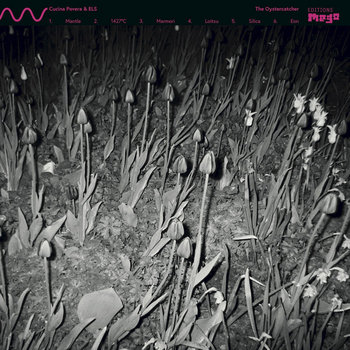
The Oystercatcher is the first collaborative LP from Cucina Povera (Maria Rossi) and ELS (Edward Simpson)
Recorded in London over two days, hours of improvisations have been edited down to form these six tracks.
A fragile interplay is at work between Maria's drifting vocals and the ominous churn of Edward's modular synth. Each sonic element takes a turn at leading the way.
The opening track "Mantle" is formed from sparse, monolithic electronics, woven gently with a thread of vocals. In the closing track "Eon," Maria's voice shepherds spontaneous bursts of sounds, almost rave-like if order were imposed, through 15 minutes of turmoil and resplendent until the end.
Maria's vocals make their own trails amongst the noise, bringing to mind the the exploratory language from Ursula K. Le Guin's album Music and Poetry from the Kesh, recalling the same understated mystery.
The overall effect of this collaboration is a completely unique creation albeit within a recognizable lineage of predecessors.
The artwork reflects the vision of these two artists, collaged together. Both images are from a trip to Helsinki. Edward's photograph of tulips caught after dark are revealed by a flash. Maria's seemingly abstract drawing is a graphite rubbing taken from a granite slab of a pavement somewhere in Kallio. Together the two images represent two different methods for capturing a city's haptic landscape.
The album moves with a feeling of transience, which is no surprise given that the idea to collaborate was formed in Helsinki, realized in London and edited together in Rotterdam.
The Oystercatcher tells a fragile tale, one that spins out into the unknown. A cold union of voice and machine, still tentative and probing, learning to co-exist. A kind of fundamental shift whereby shared moments have been turned to sound.
The oystercatcher is a bird that can freely travel between the earth, sea and sky. The motif is taken from a Tove Jansson short story. A dead bird washes ashore, two different versions of events are presented to how the bird came to die. The album feels like two different stories being presented on top of one another but ultimately coming to the same tragic conclusion.
More information can be found here.
Read More
- Administrator
- Albums and Singles
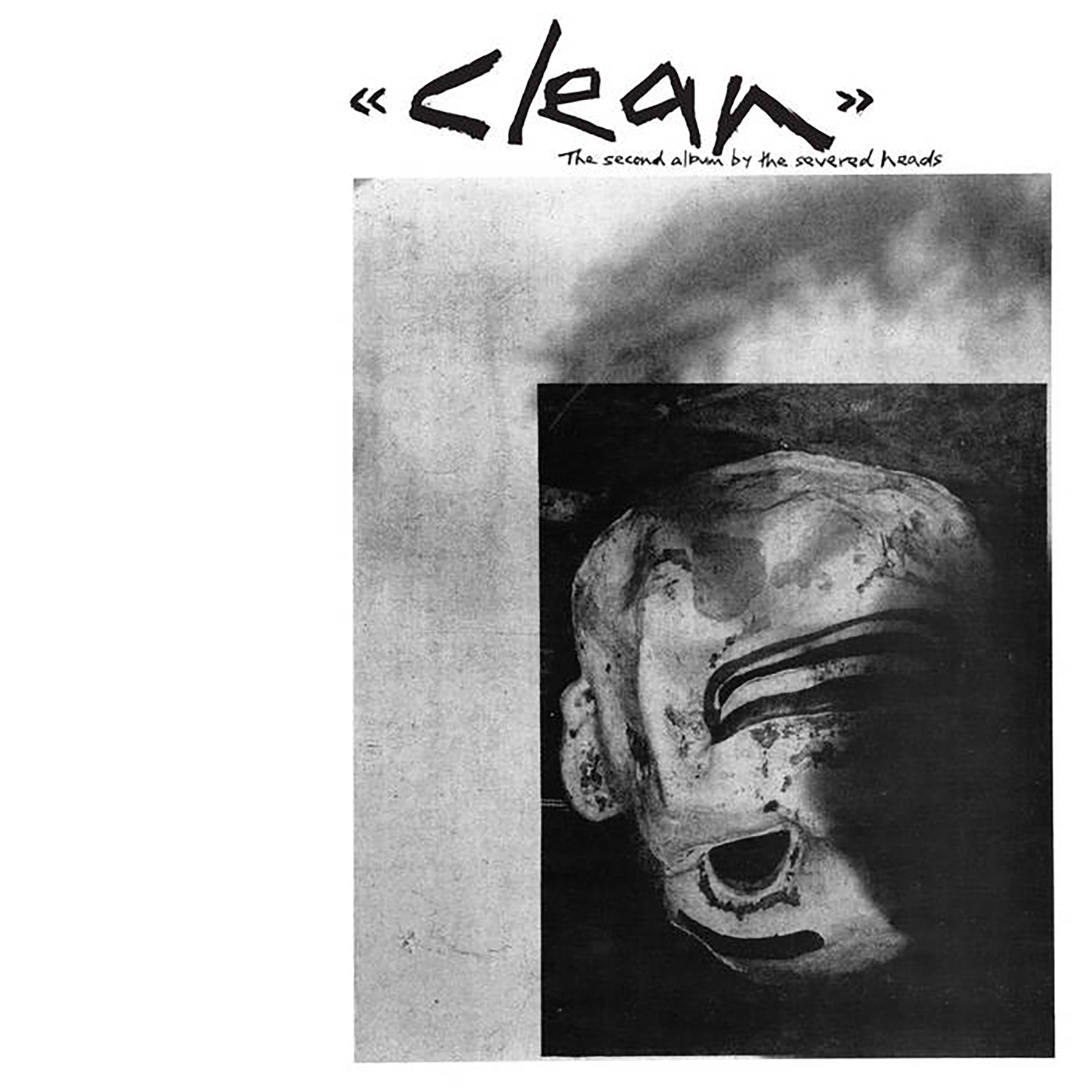 I have been a Severed Heads fan for more than twenty years now, yet I somehow never got around to investigating this early album until it was reissued earlier this year. I would like to blame poor distribution, as this album has essentially only been self-released up until now, but I definitely snapped up several other rare albums when Tom Ellard started reissuing them as self-released CD-Rs in the early 2000s. I suspect I was just insufficiently skeptical of the widespread belief that Ellard's golden age began with 1983's Since the Accident. I should have known better, as Clean was the last album to involve founding member Richard Fielding at all (Fielding later went on to found the similarly wonderful The Loop Orchestra). For the most part, however, Clean was almost entirely Ellard's show and it illustrates that he was already in his prime as a gleefully mischievous and eccentric loop-mangler as far back as 1980 or 1981. Admittedly, Ellard did not start indulging his poppier instincts in earnest for a few more years, but Clean is playful, fun, and idiosyncratic enough to hold up just fine without them.
I have been a Severed Heads fan for more than twenty years now, yet I somehow never got around to investigating this early album until it was reissued earlier this year. I would like to blame poor distribution, as this album has essentially only been self-released up until now, but I definitely snapped up several other rare albums when Tom Ellard started reissuing them as self-released CD-Rs in the early 2000s. I suspect I was just insufficiently skeptical of the widespread belief that Ellard's golden age began with 1983's Since the Accident. I should have known better, as Clean was the last album to involve founding member Richard Fielding at all (Fielding later went on to found the similarly wonderful The Loop Orchestra). For the most part, however, Clean was almost entirely Ellard's show and it illustrates that he was already in his prime as a gleefully mischievous and eccentric loop-mangler as far back as 1980 or 1981. Admittedly, Ellard did not start indulging his poppier instincts in earnest for a few more years, but Clean is playful, fun, and idiosyncratic enough to hold up just fine without them.
I suppose just about any long-running project goes through a series of distinct eras as the artist (or artists) evolve, learn new skills, and assimilate new influences, yet Severed Heads has always felt like a uniquely bizarre entity due to the vast gulf separating the two sides of Tom Ellard's artistry.The skewed synthpop of Ellard’s late '80s Nettwerk albums came as quite a surprise to me after my early exposure to Since The Accident and City Slab Horror, as it sounded like the work of a completely different band (which is especially amusing given that Fielding had already declared the band "too rock 'n roll" in the era documented here).While I am fitfully quite fond of both poles of the Sevs' aesthetic (1991's Cuisine remains an eternal favorite), it is Ellard's more primitive and experimental early work that has always been closest to my heart.The difference between a polished pop single like 1985's "Petrol" and an album like Clean is mostly one of balance though: there are certainly some hooks and melodic synth motifs strewn throughout this album, but the weirder, artier aspects tend to be front and center.On later albums, those hooks merely became the focus while the noisier, more eccentric touches were relegated to the periphery.Obviously, Ellard has hit that precarious balance better on some albums than others, but the misses simply tend to be more uniformly fascinating on Severed Heads' more rough and eclectic early work.As far as more catchy fare is concerned, Clean’s only real stabs at "pop" are: 1.) the opening "Food City," which combines a bouncy Kraftwerk-esque groove with buried tape loops, gnarled guitar squall, and a very low-in-the-mix vocal melody, and 2.) the insistently burbling "Charivari."
My favorite moments on Clean, however, tend to be the ones where Ellard takes a strong melodic or rhythmic theme and gleefully deconstructs, destroys, or mutates it into something surreal, broken, and unfamiliar.The closing "Violins and Moonlight" is probably the strongest example of this, as it opens with an obsessively looping vocal snippet, densely sputtering synth bass, and a delicate minor key arpeggio, then coalesces into a pulsing, skeletal, and mumbled approximation of hypnagogic pop that moves relentlessly forward through a cacophony of disjointed movie and TV dialogue samples.Elsewhere, "Nightsong" strips away everything except for a stomping beat, then ravages it with a dissonant repeating guitar figure and a flanging, heaving mass of churning sludge."Tiny Fingers" twists the formula yet again, resembling two completely different pieces awkwardly mashed together.It is a tactic that should not work, but the second half turns a looping radio snippet and some gurgling, distorted vocals into something weirdly hypnotic and haunting. If I had to guess, I would say the radio snippet is from a jingle for an electronics store and that is a perfect illustration of why I am so drawn to Ellard's early work: he had a real genius for recontextualizing seemingly random snatches of cultural detritus into poignant or subversive art.Obviously, there is an element of mischief and willful absurdity to the eclectic selection of samples that find their way into his work, but it would be a reductive mistake to view his aesthetic as "taking the piss" or even "transforming trash into treasure."Instead, it would be more apt to say that Ellard simply found soul and beauty in unlikely places and did his best to bring out those traits (while also amusing himself in the process, of course).
While I am understandably still annoyed with myself for sleeping on this album for so long, there is nevertheless a silver lining to waiting until now to finally hear it: a strong case can be made that this latest reissue is the definitive version.As with all Severed Heads albums from the '80s, Clean has seen several different incarnations over the years and a bunch of them omitted "Food City."Happily, that perplexing wrong has now been righted.Of course, the presence or absence of that particular piece is not exactly a deal-breaker on its own (though it is a good song), yet this latest version has also been remastered and expanded to include thirteen additional rare and unreleased songs.Some were culled from the Side Three cassette (previously included on the Adenoids compilation), but the rest are demo and live recordings that have thus far remained unheard.Historically, I have not been an enthusiastic advocate of diluting already solid and complete albums with vault scrapings. Clean, however, is a notable exception to that viewpoint, as a number of the new songs are remarkably fine tape loop collages ("You Will," "Floopness," "Somehow Pain," and the lengthy "Clean Loops" are all standouts).In fact, I prefer several of them to the songs that made it onto the original album.Granted, all of best loop-based pieces lack Ellard's vocal or synth contributions, so I suppose they represent an earlier vision of the project (and a very non-rock ‘n roll one at that), but there are also some less abstract "songs" included in the extra material and I like them too.It is crazy that it took forty years for all that material to finally surface.Naturally, my initial thought was that Ellard was responsible for some of the most warped, adventurous, and original electronic music on earth in the early '80s and that humanity should have paid far more attention to him.However, the bigger surprise is probably how well much of this material still holds up in 2020 though: Clean might not be well-produced, sophisticated, or pretty by current standards, but it remains an endearingly rough-edged, playful, and satisfying outlier: the ensuring four decades have done nothing to diminish its charm and character.While Ellard himself eventually moved on to catchier territory, no one else has yet emerged who could better early Severed Heads at their own game and it is likely that no one ever will.
Samples can be found here.
Read More

